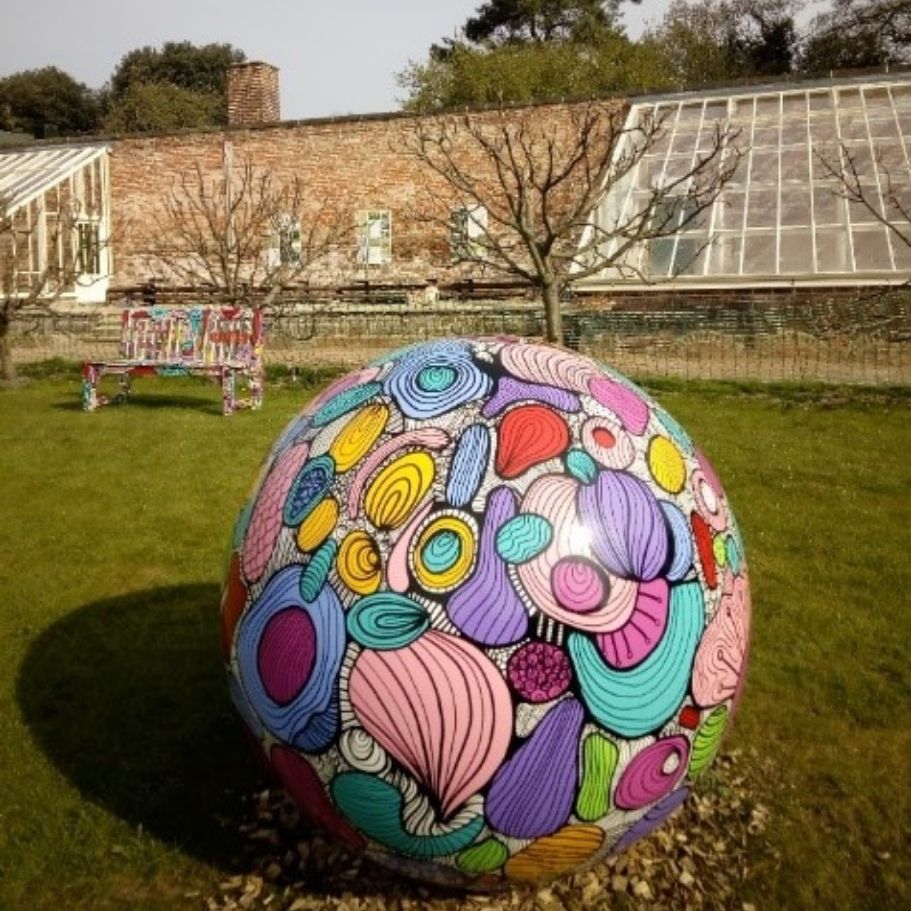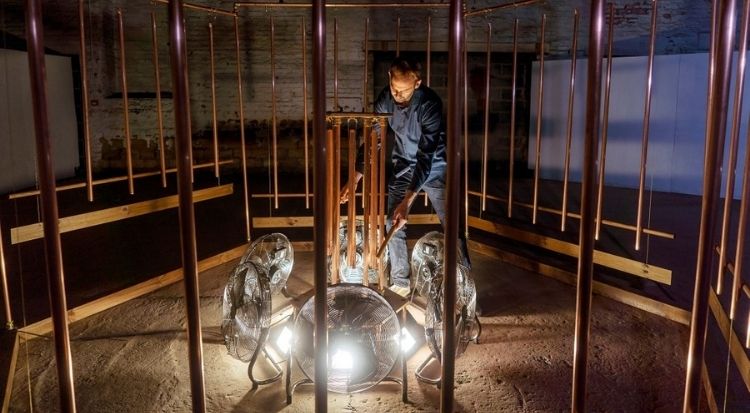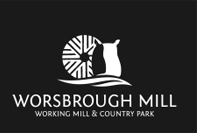Artists Combine To Celebrate Historic Partnership
1st June 2021
Three art installations are coming together at Elsecar in Barnsley to mark the culmination of ambitious three-year art and heritage programme.
The Great Place Wentworth & Elsecar programme delivered a range of activities, projects and festivals inspired by Wentworth Woodhouse and Earl Fitzwilliam’s model industrial village at Elsecar. Supported by the Arts Council and the National Lottery Heritage Fund, it was a partnership between Barnsley Council, Rotherham Council, the Wentworth Woodhouse Preservation Trust and the National Trust.
The three art installations on display are inspired by the history and memories of people living in the area. Two have been on show before, but the third, by Ed Carter, will be unveiled for the first time inside the ironworks rolling mill at Elsecar.
The Mute Still Air is inspired by the social impact of work done by Earl Fitzwilliam’s steward Benjamin Biram at Elsecar in the 1840s. Biram introduced many improvements to mining safety, including a new design for safety lamps, and enormous mechanical fans to prevent the build-up of explosive gases underground.
The installation references Biram’s contribution, through the movement of air, light, and sound. With a striking hexagonal sculpture at its centre, the work incorporates lights, fans, and a series of tuned copper wind chimes.
Ed said: “I found it incredibly evocative when I heard how the constant breeze gave miners a sense of reassurance in such a dangerous working environment. I wanted to capture something about this comforting effect, contrasted with the ominous implications of stillness.
“The idea of having light emanating from a single point within a dark space references Biram’s work on safety lamps, but the interactions with the surrounding architecture, and the shadows cast by people moving through the space, are as much a part of the piece as the physical structure itself.”
Dr John Tanner, project manager for Barnsley Museums, said: “We are delighted to welcome this work to Elsecar as Biram’s innovation and social influence were overlooked for so long. His work was here in South Yorkshire, but he changed miners’ lives around the world.
“Elsecar might be a small village, but it became an international centre of industry, and has an astounding legacy of architecture, archaeology and stories.”
Alongside the installation celebrating Biram’s achievements are plans to document the memories of local people who worked underground at Elsecar and nearby collieries, right up until the end of mining in the area in the 1980s.
The other two installations at Elsecar have been on display elsewhere and are being brought together to celebrate the culmination of the Great Place programme.
One installation is Colour Forms – straws upon the water, a series of large colourful structures by Yorkshire collaborators Lenny and Whale, which are inspired by Lady Mary Wortley Montagu who brought the concept of the smallpox inoculation to England from Turkey in 1721. It has been on display in Wentworth Castle Gardens and Cannon Hall Gardens.
The other artwork which will be on show at Elsecar is The Flock by Julie Edwards and Ron Thompson of Planet Art; an outdoor installation of 10,000 wooden birds created by members of the public who documented what happened to them during lockdown, which were originally displayed on the lawns at Wentworth Woodhouse.
All three installations will remain at Elsecar until the end of June.
Cllr Tim Cheetham, cabinet spokesperson for place at Barnsley Council, said: “The partnership bringing together Elsecar, Wentworth Woodhouse and Wentworth Castle Gardens has been a great success.
“It has brought our heritage to life for thousands of people over the last three years and is only the beginning of a new alliance linking these important places.
“We want to continue the legacy of Great Place, and with restrictions lifting we want to encourage more people to appreciate this amazing part of the world. And what better way to do it than with art, culture and our proud heritage.”
Among the events organised by WE Great Place over the last three years was a visit to Elsecar and Wentworth Woodhouse by Man Engine, a giant mechanical puppet miner; land art at Wentworth Woodhouse that was so big it could be seen from the air to coincide with the televising of the Tour de Yorkshire in 2018, and the WE Wonder Festivals at Elsecar and Wentworth Woodhouse in summer 2019.

About the artwork
The Mute Still Air is a phrase from the Samuel Taylor Coleridge poem ‘The Eolian Harp’, which was written in 1795, the same year that Elsecar New Colliery was sunk.
In the poem, Coleridge is referencing a simple type of acoustic harp, the Aeolian harp, which was popular at that time, and was named after Aeolus, the Greek god of winds, who kept the winds locked away in an underground cave. The harp was often placed by an open window, with the strings resonating in the breeze.
As well as featuring fans and giant wind chimes, the installation has a single source of light, referencing a miner’s lamp. The resulting effect is known as chiaroscuro, with stark contrast between light and dark, a technique used by a leading painter of the era, Joseph Wright of Derby. Pertinent to the story of Elsecar, he used it to great effect in capturing an 18th Century ironworks in “An Iron Forge Viewed from Without” (1773).
About WE Great Place
WE Great Place was a three-year partnership between Barnsley Council, Rotherham Council and the Wentworth Woodhouse Preservation Trust. The partnership delivered a range of cultural activities inspired by the rich history linked to Wentworth Woodhouse and Earl Fitzwilliam’s industrial empire at Elsecar. It was funded by the National Lottery Heritage Fund and Arts Council England (ACE).
The Great Place project was run from Elsecar Heritage Centre – part of the Barnsley Museums service.
About Elsecar
A bustling industrial village from the 1700s, Elsecar boomed thanks to its ironworks and thriving collieries, which were often visited by aristocrats and royalty. For 150 years it was the industrial estate village of Wentworth Woodhouse just a mile away and was developed by the Marquis of Rockingham and Earls Fitzwilliam into a model village, one of the first in the UK.
About The National Lottery Heritage Fund
Using money raised by the National Lottery, we inspire, lead and resource the UK’s heritage to create positive and lasting change for people and communities, now and in the future. www.heritagefund.org.uk Follow @HeritageFundUK on Twitter, Facebook and Instagram and use #NationalLotteryHeritageFund







